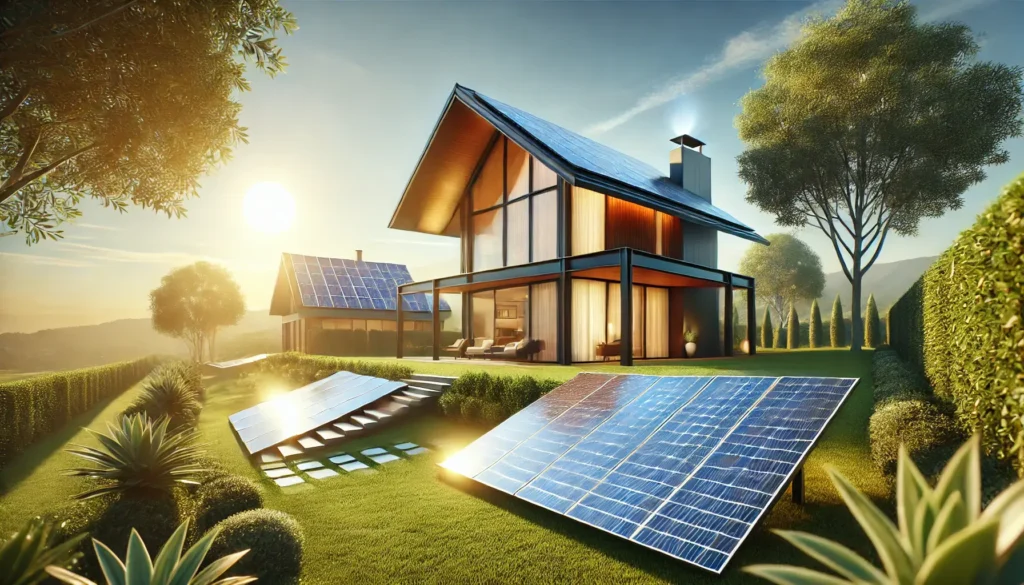Bifacial Solar Panels: The Residential Energy Upgrade You Shouldn’t Overlook in 2025
If you’re considering going solar in 2025, there’s one fast-rising technology you don’t want to overlook: bifacial solar panels. Once reserved for large-scale commercial projects, bifacial modules are now becoming more common—and cost-effective—for U.S. homeowners. With the potential to boost your system’s energy production by up to 20%, they may be the upgrade your roof or backyard has been waiting for.
Let’s explore how bifacial panels work, when they make sense, and how they’re already making a difference in residential installations.
- What Are Bifacial Solar Panels?
Bifacial solar panels capture sunlight from both their front and back sides. While standard (monofacial) panels only convert light that hits the front face, bifacial panels also absorb reflected light from underneath—like sunlight bouncing off concrete, gravel, snow, or other light-colored surfaces.
They’re typically made with glass-on-glass or transparent backsheet designs, allowing light to pass through and reflect back up to the rear cells. The result: more electricity generated from the same footprint.
- Key Benefits for Homeowners
Bifacial panels offer compelling advantages—especially in the right settings:
- More Energy from the Same Space
Depending on your roof or ground surface, you can see 5%–20% higher output compared to traditional panels. - Perfect for Reflective Surfaces
White gravel yards, concrete patios, metal rooftops, or snow-covered lawns can significantly enhance rear-side generation. - Ideal for Ground Mounts and Flat Roofs
Elevated panel setups—like pergolas, carports, or backyard arrays—maximize reflected light exposure underneath the panels. - Lower Long-Term Cost per Watt
With higher efficiency and greater output over time, bifacial systems often offer better ROI over the panel’s 25+ year lifespan.
- Are They Worth the Extra Cost?
Bifacial panels tend to cost 5–10% more upfront than monofacial systems. But in the right conditions, the added output can quickly offset the initial premium.
Where do they work best?
- High-elevation or snowy states like Utah and Colorado
- Sun-drenched backyards or patios in Texas and Arizona
- Homes with open reflective terrain (white stone, light concrete, sand)
When paired with the 30% Federal Solar Tax Credit (and any applicable state rebates), bifacial systems become even more affordable.
- Real-World Performance in 2025
This year, residential installers across the U.S. have reported energy gains ranging from 5% to 20% on homes that incorporate bifacial panels. The results vary based on panel height, tilt, and surface reflectivity, but here are some highlights:
- A home in Denver, CO with bifacial panels over a white gravel roof saw a 14% production increase compared to a monofacial setup.
- In Dallas, TX, a backyard pergola with bifacial modules over a light concrete slab added 9% more annual output.
- In Salt Lake City, UT, a flat roof system on a snowy property hit 20% higher winter gains during January and February.
- Can You Use Them at Home?
Absolutely—bifacial panels can be installed on most homes with the right design approach:
- Backyards & Pergolas: Perfect for creating solar-shaded patios that generate more power.
- Garage Roofs: Great opportunity for standalone or add-on solar systems.
- Flat or Light-Colored Roofs: Bifacial panels work best with some air gap and reflectivity.
- Ground Mount Systems: Ideal layout to capture reflected light and enhance rear production.
Not every home needs bifacial panels, but if your layout is a match, the potential energy gains and long-term savings make them a smart upgrade.
Ready to Boost Your Solar Output in 2025?
Want to find out if bifacial panels are a good fit for your roof or yard?
Book a free solar consultation today and discover how you can generate more energy—and value—from the sun this year.
Ready to make the switch?
Contact us today to learn how solar panels can help you save more in the long run!
Complete Residential Solar Panels and Systems. Serving Texas, Oklahoma, Kansas, Missouri, Utah, Florida & Ohio
Get a Free Quote Now
